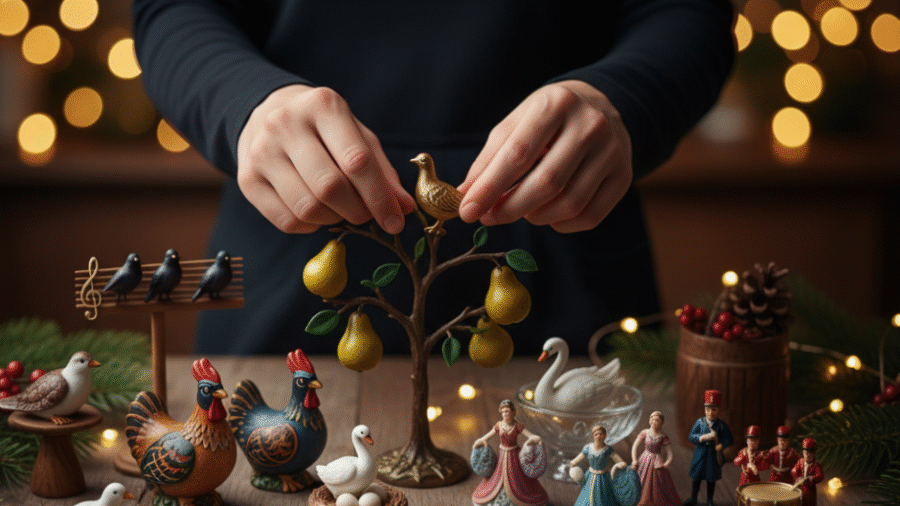The 12 Days of Christmas is a festive tradition that has captivated hearts and homes for centuries. Whether through the well-known carol or the underlying customs, these days represent a special segment of the Christmas season, rich with history, symbolic meaning, and joyful celebrations.
As Christmas 2025 approaches, diving into the origins, significance, and contemporary practices of the 12 Days of Christmas can deepen appreciation and inspire unique holiday experiences.
This comprehensive article explores everything about the 12 Days of Christmas—from its medieval roots and musical heritage to modern adaptations and ideas for meaningful observance.
What Are the 12 Days of Christmas?
Traditionally, the 12 Days of Christmas begin on December 25th, Christmas Day, and continue until January 5th, the eve of Epiphany (also known as Twelfth Night). Epiphany, celebrated on January 6th, commemorates the visit of the Magi (Three Wise Men) to the baby Jesus, symbolizing the revelation of Christ to the Gentiles.
Throughout these 12 days, Christian communities mark various feast days, prayers, and celebrations, forming a liturgical period known as Christmastide.
The Origin and History of the Tradition
-
The concept of celebrating the 12 days dates back to medieval Europe.
-
Early Christians emphasized this period as a time of continued festivity and reflection post-Christmas.
-
Customs varied widely by geography, blending religious observances with local cultural and pagan rites.
-
The secular popularity of the 12 Days of Christmas grew notably through the famous English carol first published in 1780, which lists a series of symbolic gifts counted and repeated for each of the 12 days.
The Meaning Behind the 12 Days of Christmas Carol
The carol “The Twelve Days of Christmas” is famous for its cumulative format in which a series of gifts are given on each day, increasing in number. These include:
-
Partridge in a pear tree
-
Two turtle doves
-
Three French hens
-
Four calling birds
-
Five golden rings
-
Six geese a-laying
-
Seven swans a-swimming
-
Eight maids a-milking
-
Nine ladies dancing
-
Ten lords a-leaping
-
Eleven pipers piping
-
Twelve drummers drumming
While some believe these gifts held coded meanings for Catholics during periods of persecution, most scholars view them primarily as festive imagery and a memory challenge for singing games.
Traditional Observances During the 12 Days
-
Feast Days: Many saints’ feast days and biblical events are celebrated, such as St. Stephen’s Day (Dec 26), St. John the Evangelist (Dec 27), Holy Innocents’ Day (Dec 28), and Epiphany (Jan 6).
-
Epiphany Celebrations: Includes church services, blessing of homes, and “Three Kings Day” customs with gift-giving.
-
Party and Social Rites: Feasting, music, dancing, and merriment often continue throughout the 12 days in some cultures.
-
Prayer and Reflection: In Christian liturgy, the period ends with prayerful observances around Epiphany.
Modern Traditions and How to Celebrate the 12 Days of Christmas in 2025
While mainstream culture often considers Christmas Day or Christmas Eve as the holiday’s high points, embracing the full 12 days enriches the season. Here are creative ways to observe the 12 Days of Christmas this year:
1. Daily Acts of Kindness
Dedicate each day to performing a small act of generosity or goodwill, embodying the spirit of the season.
2. Themed Family Activities
Assign activities matching the gifts or symbolism in the carol, such as bird-watching for “partridge” day or a music night for “pipers piping.”
3. Countdown Gift Giving
Exchange small holiday-themed gifts over the 12 days rather than all at once, prolonging the festivities.
4. Educational Reflections
Explore historical and religious significance daily through readings, documentaries, or discussions.
5. Community Celebrations
Attend Epiphany pageants, concerts, or church services to connect with local traditions.
6. Festive Foods and Drinks
Sample traditional dishes from cultures that celebrate the 12 Days, such as King Cake or wassail.
The 12 Days of Christmas in Popular Culture
The carol and concept have inspired countless adaptations:
-
Holiday movies and TV specials referencing “12 Days”
-
Themed gift guides and marketing campaigns around the 12 gifts
-
Games and challenges inspired by the cumulative song format
These cultural elements help keep the tradition vibrant and accessible.
Environmental and Social Impact Awareness
As Christmas celebrations extend, being mindful of sustainability is essential:
-
Avoid overconsumption with 12 days of mindful giving.
-
Consider eco-friendly decorations and gift wrapping.
-
Support local artisans and ethical charities in holiday activities.
SEO Tips for Content Related to the 12 Days of Christmas
Keywords and phrases around “12 Days of Christmas,” “Christmas carol meaning,” “Epiphany traditions,” and “holiday countdown ideas” gain traction seasonally. Creating content that mixes history, culture, and practical celebration tips can attract diverse readers.
High Authority Resource for Exploring the 12 Days of Christmas
For detailed insights into the history and traditions associated with the 12 Days of Christmas, the Britannica website offers well-researched articles and references. Visit Britannica – Twelve Days of Christmas for authoritative information.
Read More: Christmas Gifts: A Guide to Meaningful, Trendy, and Thoughtful Presents for Christmas 2025
Conclusion
The 12 Days of Christmas represent a rich tapestry of religious significance, cultural celebration, and joyful tradition. By embracing the full span of Christmastide, you deepen the seasonal experience beyond December 25th, savoring continued connection, reflection, and merriment.
As Christmas 2025 approaches, consider exploring and celebrating these twelve magical days to enhance your holiday spirit and create meaningful memories with family and friends.



Add a Comment